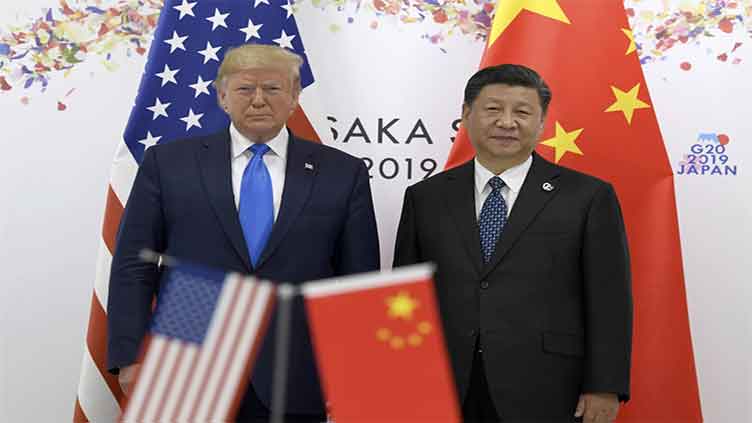DM Monitoring
WASHINGTON: One went to the United States. The other went to China. It was a sign of the times.
While the Swiss president was in Washington last week to lobby US officials over President Donald Trump’s threatened 31% tariff on Swiss goods, the Swiss foreign minister was in Beijing, expressing his nation’s willingness to strengthen cooperation with China and upgrade a free trade agreement.
As Trump’s trade war locks the world’s two largest economies on a collision course, America’s un-nerved allies and partners are cozying up with China to hedge their bets. It comes as Trump’s trade push upends a decade of American foreign policy — including his own from his first term — toward rallying the rest of the world to join the United States against China. And it threatens to hand Beijing more leverage in any eventual dialogue with the U.S. administration.
With Trump saying that countries are “kissing my ass” to negotiate trade deals on his terms or risk stiff import taxes, Beijing is reaching out to countries far and near. It portrays itself as a stabilizing force and a predictable trading partner, both to cushion the impact from Trump’s tariffs and to forge stronger trade ties outside of the U.S. market.
“America and China are now locked in a fierce contest for global supremacy,” Singaporean Prime Min-ister Lawrence Wong said in an April 16 speech. “Both powers claim they do not wish to force countries to choose sides. But in reality, each seeks to draw others closer into their respective orbits.”
Trump has paused some of his steepest tariffs on most American partners for 90 days after global fi-nancial markets melted down. But he has raised tariffs on Chinese goods to 145%, drawing rebukes from Beijing, which has vowed to “fight to the end.” U.S. companies are warning of higher prices, meaning Trump could face both higher inflation and empty store shelves.
The magnitude of the taxes are already dramatically affecting American imports, with the shipping containers set to arrive at the Port of Los Angeles down nearly 36% over the past two weeks, accord-ing to Port Optimizer, which tracks vessels. It’s lending urgency for both the U.S. and China to bolster support from alternate partners.
While Trump administration officials suggest the president could ease the duty rates on Chinese goods at his discretion, there has been no indication he’s yet looking for a reduction. That, after all, could suggest his protectionist policies were hurting the American economy. “They want to make a deal obviously,” Trump told reporters Sunday, saying the U.S. had gone “cold turkey” on trade from China. “Right now, they’re not doing business with us.”
The White House has framed any negotiations as being between the U.S. president and Chinese Pres-ident Xi Jinping, but neither leader seems willing to make the initial outreach without some kind of concession.
The two countries can’t even agree publicly whether they are holding talks.
Earlier this month, Xi — on his first foreign trip this year — visited Vietnam, Malaysia and Cambodia, resulting in mutual pledges for closer economic and trade ties. In Vietnam, which faces the 46% tariff from the U.S., Beijing and Hanoi agreed to strengthen industrial and supply chain cooperation. In Ma-laysia and Cambodia, Xi secured similar agreements. Cambodia is faced with a 49% tariff from the U.S., and Malaysia 24%.
Then there’s Japan: Despite its long-standing enmity towards the nation that once colonized parts of it, the Chinese government has reached out to Tokyo and urged a coordinated response, according to media.


